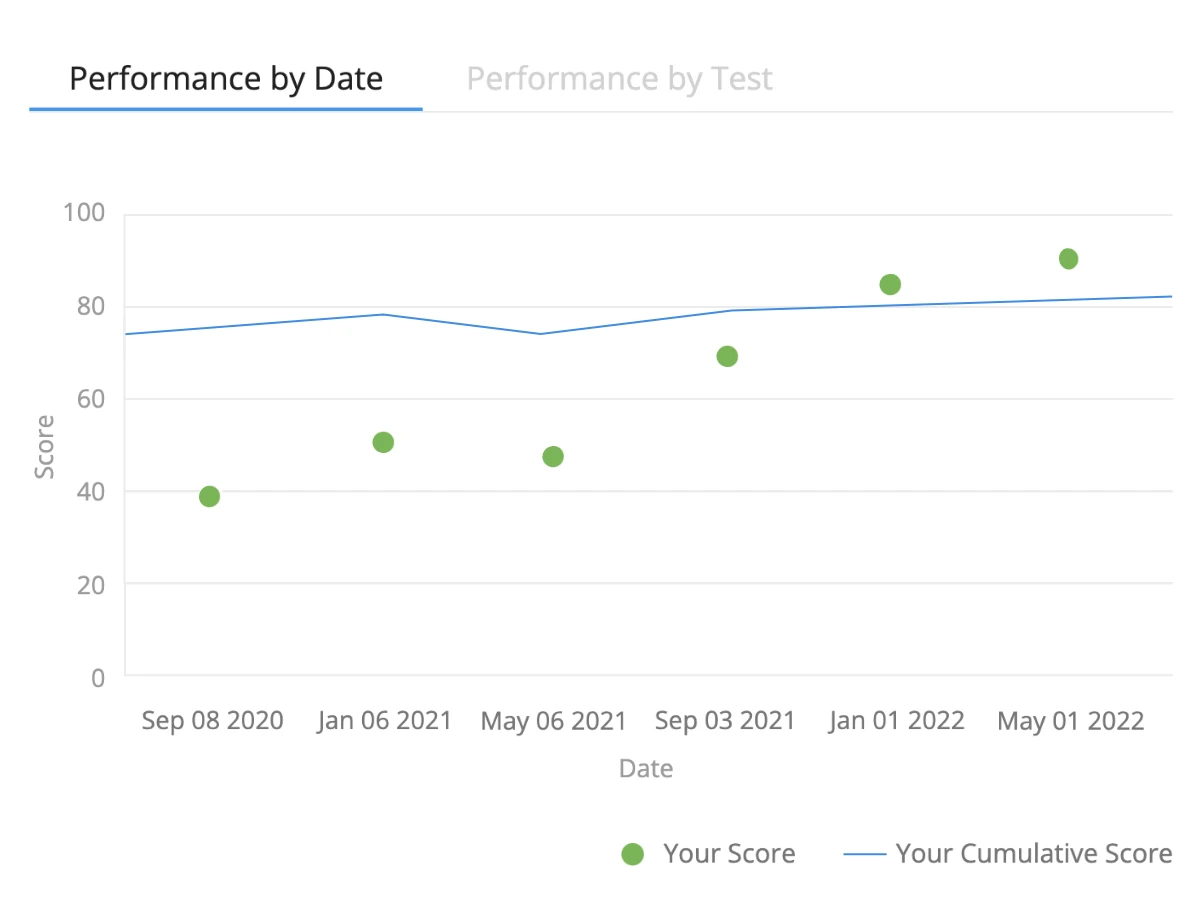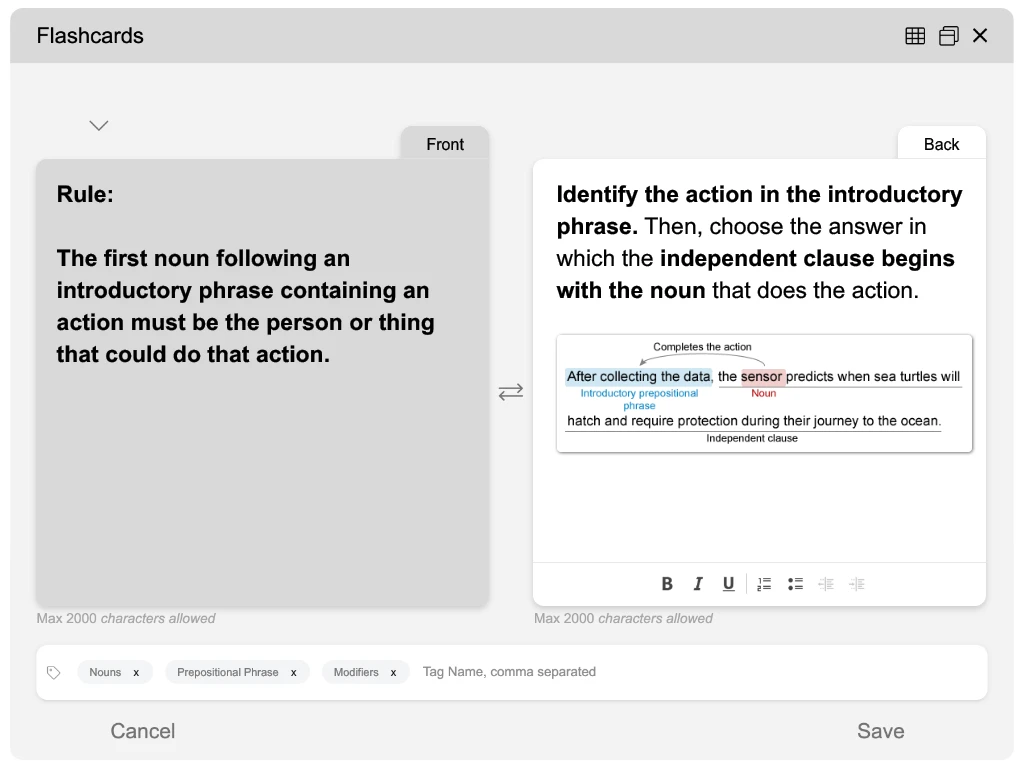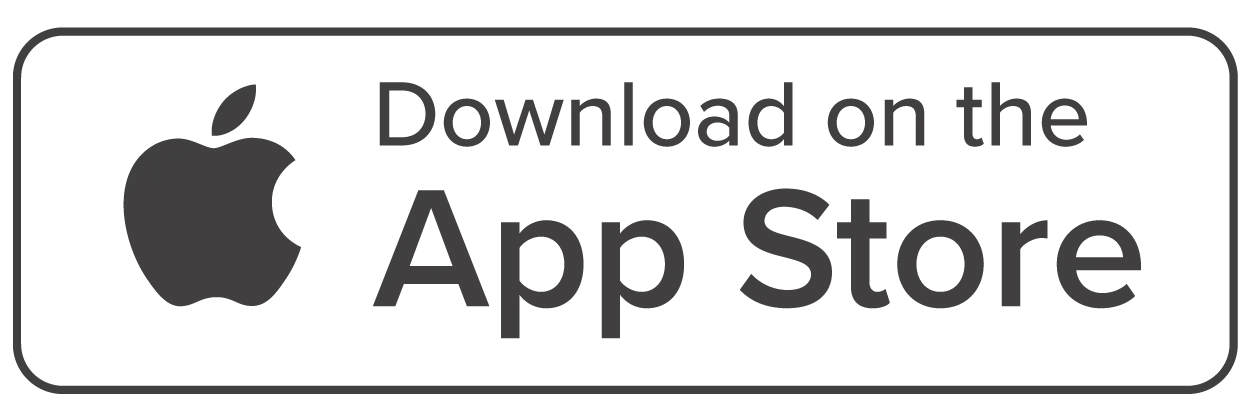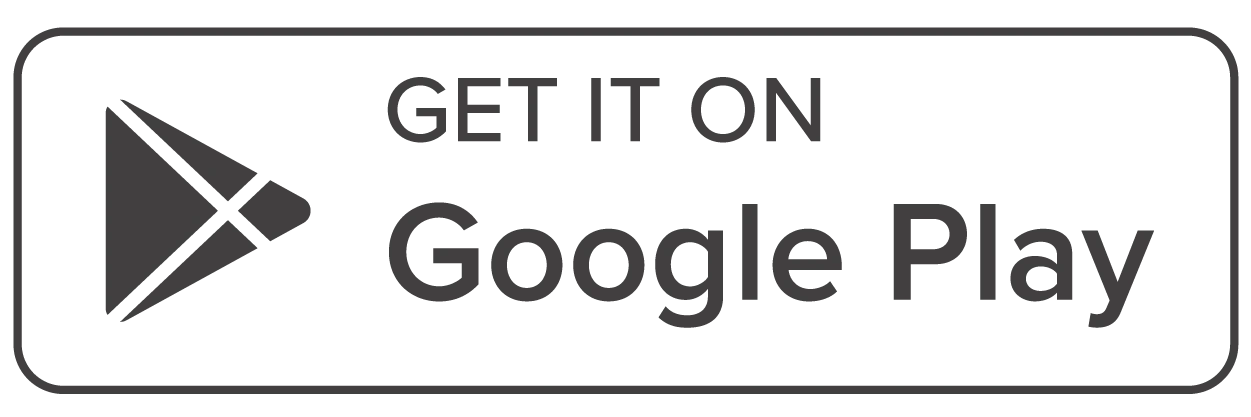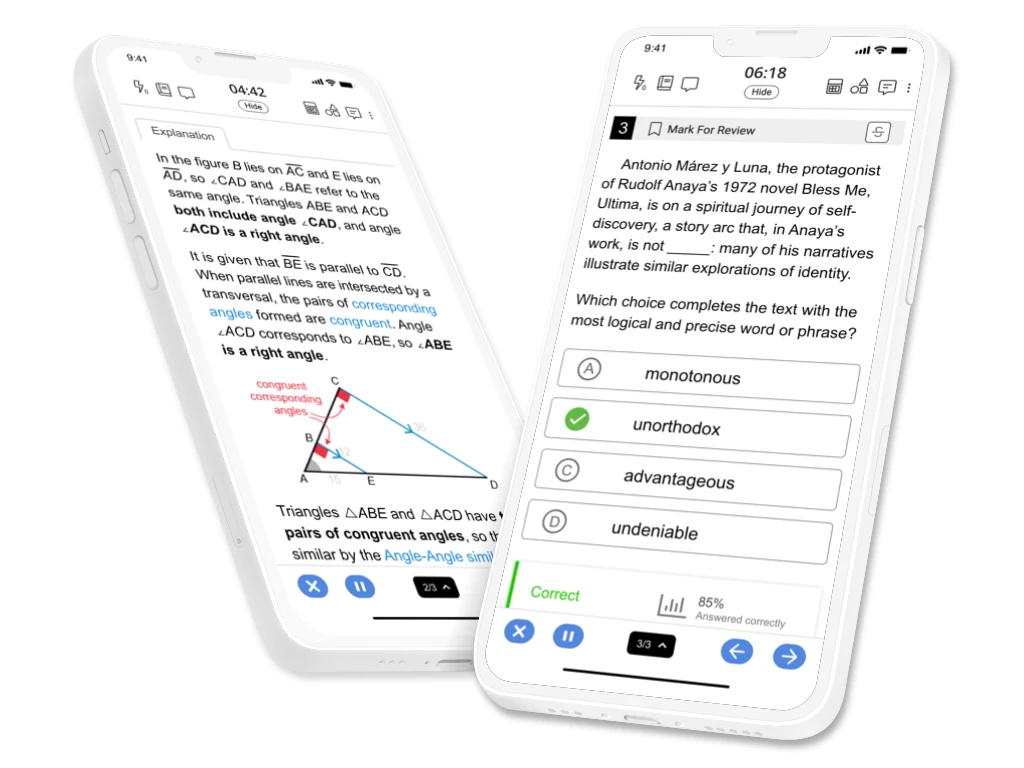SAT® Writing Practice Tests and Questions
Our SAT® Writing Practice Tests and Questions are written by subject matter experts to meet or exceed exam-level difficulty, because we believe that if practice feels like the actual exam, the real thing will feel like practice. Not getting something? We’ve got you covered with in-depth answer explanations and vivid illustrations that make hard stuff easy to understand.
*Digital SAT Writing Practice Bank available July 2023!
*The Reading and Writing sections of the SAT will be combined in the US starting March 2024
Benefits of Practicing SAT Writing Exam-Like Questions
Unlimited Exam-level Practice
Customized to Your Needs
Understand the Why
SAT Writing Sample Questions
A certain number of mandatory volunteer service hours are required for many high school students to graduate. Such service, be it serving meals at a soup kitchen, when they create crafts with kids at the library, or helping people at a senior citizens’ home, has received a lot of attention and backlash.
Given its definition, volunteer work should be something that people want to do. “To call mandatory community service ‘volunteering’ is a problem because then we begin to confuse the distinction between an activity that is freely chosen and something that is obligatory,” says Linda Graff, president of an international consulting firm. Ruth MacKenzie, former president and CEO of Volunteer Canada, voices similar thoughts: “The mandated nature means this is not really volunteering, and the fear…is that forcing kids to volunteer…might turn them off the concept for the rest of their lives.”
But what about the positives? Research reveals no negative impacts from education administrators’ removing a high schoolers option about whether to volunteer. Supporters of required volunteering who are in favor of it also point to significant research that proves the younger individuals become involved in volunteering, the more likely they are to be lifelong volunteers who care about others, make positive contributions to the community, and have less time for themselves.
Is forcing students to volunteer different from forcing them to learn proper language or science skills? All these skills help define students’ knowledge base and even effect the attitudes that students will carry with them throughout their lives. However, high school does more than prepare students for further education, it also helps with social interaction, equips them for problem-solving in all aspects of life, and often directs students down a lifelong path—career or otherwise.
One theory suggests a correlation between service learning and higher academic achievement. Also, many believe that students who volunteer acquire more transferable skills in a practical setting, making them more employable than the skills of those who lack real-world experience. For example, volunteering allows students to interact with people from other walks of life and to try a variety of tasks to see what they most enjoy. Employers know that the more someone volunteers, the more likely it is that the individual will be a hard worker. Another benefit is that many scholarships have volunteer-hour requirements or, at the very least, are awarded to students who are active participants in their community. Therefore, students who volunteer are much more likely to meet both their educational and career goals.
Also, many believe that students who volunteer acquire more transferable skills in a practical setting, making them more employable than the skills of those who lack real-world experience.
- NO CHANGE
- than students
- than the skills gained by students
- with volunteers
Also, many believe that students who volunteer acquire more transferable skills in a practical setting, making them more employable than students who lack real-world experience.
Rule: Comparisons should be made between similar things: objects with objects, people with people.
For a sentence to make sense, comparisons should be made between like things. For example: Mechanics who graduate from trade school typically make more money than mechanics who don’t. The parallel structure of the repeated phrase “mechanics who” indicates that similar people are being compared.
Here, “students” parallels a phrase from earlier in the sentence that indicates the students who volunteer are being compared to students “who lack real world experience.” Because “than” is a word that indicates a comparison, the correct answer is than students.
(Choices A and C) Both of these answers incorrectly compare “students” (people) with “skills” (things). (Incorrect: The students know more than their skills. Correct: Our students have more skills than your students.)
(Choice D) This answer doesn’t contain a word that indicates a comparison. Instead, “with” indicates that when students are accompanied by volunteers who don’t have work experience, they are more likely to get a job, which isn’t logical.
Things to remember:
Compare people to other people and things to other things. Also, look for an answer choice that provides parallel structure to the other part of the comparison. (Incorrect: He is a bigger rap music fan than country music. Correct: He is a bigger rap music fan than I am.)
A vampire is a thirsty thing, spreading metaphors like antigens, through its victim’s blood. It is a rare situation that is not metaphorically defamiliarized by the introduction of a vampiric motif, whether it be migration and industrial change in Dracula; adolescent coming-of-age in Twilight; or racism in True Blood. Beyond undead life and the knack of becoming a bat, the vampire’s true power is its ability to induce intense paranoia about the nature of social relations to ask, “Who are the real bloodsuckers?”
This is certainly the case with the first fully realized vampire story in English, John Polidori’s 1819 tale, “The Vampyre.” It is Polidori’s text that establishes the vampire as we know it. He reimagined the feral, mud-caked creatures of southeastern European legend as the elegantly magnetic denizens swarming all around the cosmopolitan assemblies and polite drawing rooms.
“The Vampyre” is a product of 1816, when Lord Byron left England in the wake of a disintegrating marriage and rumors of madness, to travel to the banks of Lake Geneva and there loiter with Percy and Mary Shelley: then still Mary Godwin. Polidori served as Byron’s travelling physician. He also played an active role in the summer’s tensions and rivalries. He also participated in the famous night of ghost stories that produced Mary Shelley’s “hideous progeny,” Frankenstein.
Like Frankenstein, “The Vampyre” draws extensively on the mood at Byron’s Villa Diodati. But whereas Mary Shelley incorporated the orchestral thunderstorms that illuminated the lake and the sublime mountain scenery that served as a backdrop to Victor Frankenstein’s struggles, Polidori’s text is woven from the invisible dynamics of the Byron-Shelley circle, and especially the humiliations he suffered at Byron’s hand.
The most overt example of Byron as the devourer of souls was a novel Polidori read over the course of the summer—Glenarvon by Lady Caroline Lamb. Byron and Lamb had enjoyed a brief affair until he, somewhat rattled, had called it off. That Polidori took inspiration from Lamb is revealed in the name he gives his villain—Lord Ruthven, one of Glenarvon’s various ancestral titles. Polidori’s Ruthven also inhabits Glenarvon‘s aristocratic milieu as a member of the bon ton.
Rather than providing validation for his creative outlet, Polidori’s humiliation was only compounded by the publication of “The Vampyre.” Although the text was similarly prompted by the ghost story competition that inspired Mary Shelley so ably, but Polidori only completed his story for the pleasure of a friend outside of the Byron-Shelley circle. The manuscript lay forgotten for three years until finally coming into the hands of the disreputable journalist Henry Colburn, who reported it in his New Monthly Magazine under the title “The Vampyre: A Tale by Lord Byron.”
It is a rare situation that is not metaphorically defamiliarized by the introduction of a vampiric motif, whether it be migration and industrial change in Dracula; adolescent coming-of-age in Twilight; or racism in True Blood.
- NO CHANGE
- Dracula, adolescent coming-of-age in Twilight,
- Dracula; adolescent coming-of-age in Twilight,
- Dracula, adolescent coming-of-age in Twilight;
Rule: Commas separate phrases within a list.
Look for the pattern of listed items to help you determine where one ends and the next begins.
This list contains a noun followed by a prepositional phrase. Because “adolescent” describes “Twilight” instead of “Dracula,” a comma is needed to show where the first listed item ends and the next begins. Likewise, the conjunction “or” indicates where the second listed item ends, so there needs to be a comma after Twilight. Therefore, Dracula, adolescent coming-of-age in Twilight, is the correct answer.
(Choices A, C, and D) Semicolons separate items in a list when the listed items already contain commas. (Ex. Ed bought apples, oranges, and grapes at Kroger; meat, dairy, and fish at Albertsons; and toothpaste, soap, and razors at Walgreens.) However, the items in this list (ex. “migration and industrial change”) don’t already contain commas. On the SAT, commas, not semicolons, are usually used to separate items in lists.
Things to remember:
Use commas to separate items in a list when those items contain no other punctuation.
Two dancers in wheelchairs faced each other, raising their arms in intricate patterns. Others incorporated crutches or a chair into their actions. The dancers, bailing from around the world, came together for a week in June for UCLA’s Dancing Disability Lab, which was hosted by the world arts and cultures/dance group and lasted for seven days. This lab is a cross-disciplinary initiative designed to reframe again cultural understanding and practices around the concept of disability through classes and community engagement. Each lab builds and strengthens networks of university faculty, staff, and students so that community leaders can transform the discourse and awareness surrounding disability.
Mel Chua, a biomedical engineering student at Georgia Tech, said she was hesitant to apply for the program because she assumed that her previous dance training wasn’t advanced enough. But Chua came to realize that the reason she felt negligibly unqualified was that, as a deaf person, she had never had access to dance training like what she had experienced at the Disability Lab. A first for Chua and many other dancers was getting to dance with a group of exclusively disabled dance artists. Instead of being the only disabled person in the class, feeling graded by disability, or having to translate choreography designed for nondisabled dancers, the participants were united in how they each expanded dancing conventions. Being in a dance workshop where everyone has a disability was empowering and eye-opening for all the dancers.
That said, Chua emphasized that she is not looking to expose others or receive sympathy for the challenges she faces. Although the idea of inclusion often focuses on bringing disabled and nondisabled people together, Chua believes it’s important for disabled people to have spaces that are just their own. The lab gives disabled artists a chance to be heard and seen differently than some might be accustomed to—a necessary step in cinching that nondisabled persons will be allies and provide ongoing support for equal access and inclusion.
Although the idea of inclusion often focuses on bringing disabled and nondisabled people together, Chua believes it’s important for disabled people to have spaces that are just their own.
- NO CHANGE
- and which
- to which
- of which
Although the idea of inclusion often focuses on bringing disabled and nondisabled people together, Chua believes it’s important for disabled people to have spaces that are just their own.
Determine the right word or phrase by seeing which one makes sense in context.
In general, “that” introduces a clause that describes the noun immediately before it. (Ex. My parents have a lake house that we enjoy on the weekends.) Because “are just their own” describes “spaces,” the correct answer is “that” or NO CHANGE.
(Choice B) “And which” is used when one descriptive clause follows another one. (Ex. Tomorrow is the day of my test, which I’ve been dreading and which I must pass to graduate.) Without another descriptive clause, there’s nothing that the “and which” can follow.
(Choices C and D) Both “to which” and “of which” are prepositional phrases, which would make “which” the object of a preposition. Because prepositional objects can’t be the subject of a clause, the dependent clause would be left without a subject.
Things to remember:
“That” introduces an essential clause describing the noun immediately before it.
A vampire is a thirsty thing, spreading metaphors like antigens, through its victim’s blood. It is a rare situation that is not metaphorically defamiliarized by the introduction of a vampiric motif, whether it be migration and industrial change in Dracula; adolescent coming-of-age in Twilight; or racism in True Blood. Beyond undead life and the knack of becoming a bat, the vampire’s true power is its ability to induce intense paranoia about the nature of social relations to ask, “Who are the real bloodsuckers?”
This is certainly the case with the first fully realized vampire story in English, John Polidori’s 1819 tale, “The Vampyre.” It is Polidori’s text that establishes the vampire as we know it. He reimagined the feral, mud-caked creatures of southeastern European legend as the elegantly magnetic denizens swarming all around the cosmopolitan assemblies and polite drawing rooms.
“The Vampyre” is a product of 1816, when Lord Byron left England in the wake of a disintegrating marriage and rumors of madness, to travel to the banks of Lake Geneva and there loiter with Percy and Mary Shelley: then still Mary Godwin. Polidori served as Byron’s travelling physician. He also played an active role in the summer’s tensions and rivalries. He also participated in the famous night of ghost stories that produced Mary Shelley’s “hideous progeny,” Frankenstein.
Like Frankenstein, “The Vampyre” draws extensively on the mood at Byron’s Villa Diodati. But whereas Mary Shelley incorporated the orchestral thunderstorms that illuminated the lake and the sublime mountain scenery that served as a backdrop to Victor Frankenstein’s struggles, Polidori’s text is woven from the invisible dynamics of the Byron-Shelley circle, and especially the humiliations he suffered at Byron’s hand.
The most overt example of Byron as the devourer of souls was a novel Polidori read over the course of the summer—Glenarvon by Lady Caroline Lamb. Byron and Lamb had enjoyed a brief affair until he, somewhat rattled, had called it off. That Polidori took inspiration from Lamb is revealed in the name he gives his villain—Lord Ruthven, one of Glenarvon’s various ancestral titles. Polidori’s Ruthven also inhabits Glenarvon‘s aristocratic milieu as a member of the bon ton.
Rather than providing validation for his creative outlet, Polidori’s humiliation was only compounded by the publication of “The Vampyre.” Although the text was similarly prompted by the ghost story competition that inspired Mary Shelley so ably, but Polidori only completed his story for the pleasure of a friend outside of the Byron-Shelley circle. The manuscript lay forgotten for three years until finally coming into the hands of the disreputable journalist Henry Colburn, who reported it in his New Monthly Magazine under the title “The Vampyre: A Tale by Lord Byron.”
Rather than providing validation for his creative outlet, Polidori’s humiliation was only compounded by the publication of “The Vampyre.”
- NO CHANGE
- the publication of “The Vampyre” only served to compound Polidori’s humiliation.
- the humiliation of Polidori was only compounded when “The Vampyre” was published.
- the compounding of Polidori’s humiliation happened with the publication of “The Vampyre.”
Rule: The first noun following an introductory phrase should be the person or thing that phrase describes.
Look at the first noun of each answer choice to see which one could be described by the introductory information.
Based on the introductory phrase, “Rather than providing a creative outlet,” ask yourself, which answer choice begins with a word that could provide a creative outlet for Polidori? The answer is the publication of his story. The correct answer, then is the choice in which “publication” is the first noun: the publication of “The Vampyre” only served to compound Polidori’s humiliation.
(Choices A, C, and D) None of these answers begin with a noun that could provide a creative outlet.
- Choices A and C: The first noun in both these answers is “humiliation” (extreme embarrassment), which wouldn’t provide a creative outlet. “Polidori” is mentioned in Choice A to describe whose humiliation is referenced.
- Choice D: “Compounding” (making something worse) functions as a gerund and the first noun after the introductory phrase. When something is made worse, it doesn’t make sense that it also provides a creative outlet, which is generally positive.
Things to remember:
To communicate clearly, the first noun after an introductory phrase should be what is described by that phrase.
YouTube artist Jon Cozart asks, “Do you ever wonder why Disney tales all end in lies?” in his 2013 musical parody. Cozart responds to the question with a catchy and humorous, but slightly shocking, series of answers about what he thinks could have happened after Ariel, Jasmine, Belle, and Pocahontas experienced their “happily ever afters.” The medley was published on a musical video-sharing site, where it has been watched over 61 million times since its publication. The video—titled “After Ever After,” reimagines these four self-aware Disney princesses in our real world and speculates about how they would handle this harsh and difficult reality.
This formulaic ending for protagonists of the fairy tale has been persuasive to the genre. The development of postmodernism and feminism in recent decades has resulted in an audience that is less willing to accept that standard and unsatisfying conclusion. Due to this dissatisfaction, revisionist versions of classic stories have become popular. A combination of fairy tale scholarship, new media and amateur media studies, folklore, and cultural studies adds to the analysis of this form of fairy tale revision, which aligns to the more realistic world view reflected in Cozart’s video.
While there has recently been a surge in fairy tale retellings through television shows, movies, and books to meet this contemporary demand, the feminist views emerging on the videos of YouTube.com allow an individual to create and broadcast material to a worldwide audience from the comfort of his or her own home. Being comfortable is important to making popular movies.
Cozart parodies the plots of four animated Disney movies with recognizable music from the original films. Many find this compilation to be artistic, humorous, and extremely catchy. Others question whether the familiar characters and unique presentation might satirically critique the politics, environmentalism, racism, and colonialism of Western society. Cozart’s perspective as the creator is that of a young American male, but his audience is expanded by the content of his parody and the platform through which the material was produced.
This case study, of Cozart’s first “After Ever After” video examines the use of Disney heroines as spokespersons of Cozart’s digital parody, which can be considered quite funny to some people but very offensive to others. Cozart is one of many who comment on society by making use of “the end” as a new beginning. In doing so, he retains some aspects of “classic Disney” while subverting much of the sense of wonder that gives the original genre its name.
This case study, of Cozart’s first “After Ever After” video examines the use of Disney heroines as spokespersons of Cozart’s digital parody, which can be considered quite funny to some people but very offensive to others. Cozart is one of many who comment on society by making use of “the end” as a new beginning. In doing so, he retains some aspects of “classic Disney” while subverting much of the sense of wonder that gives the original genre its name.
- NO CHANGE
- which question how these four young girls contributed to the lies.
- which functions as social, historical, political, and environmental commentary.
- although his motivations for changing these stories is not really clear.
P6: This case study, of Cozart’s first “After Ever After” video examines the use of Disney heroines as spokespersons of Cozart’s digital parody, which functions as social, historical, political, and environmental commentary. Cozart is one of many who comment on society by making use of “the end” as a new beginning. In doing so, he retains some aspects of “classic Disney” while subverting much of the sense of wonder that gives the original genre its name.
Reread the paragraph and summarize what is being discussed: this will be the main point of the paragraph. Select the answer choice that has a similar idea.
This paragraph discusses how Cozart’s Disney heroines are used as spokespersons to comment on society and to subvert (ruin) the sense of wonder that Disney movies often portray. The main point of the paragraph, then, is that Cozart’s video is commenting on various aspects of society’s culture. Therefore, the correct answer is the one that says that Cozart’s digital parody functions as social, historical, political, and environmental commentary.
(Choice A) Although people’s reactions to parodies do vary, that difference doesn’t reflect the main point of the rest of the paragraph.
(Choice B) P1, not P6, focuses on how fairy tales end in lies, but it does not discuss how these four young women might have “contributed to the lies.”
(Choice D) The paragraph doesn’t reflect on Cozart’s reasons for making the videos, so anything about his motivation for making them not being clear isn’t relevant to what’s being discussed.
Things to remember:
Determine the main point of the paragraph you’re trying to support and choose the answer with related information.
Enjoying our questions? Receive them every week, absolutely free!
Signup to receive free UWorld questions every week
Get 400 on the SAT Writing Section with UWorld
Study content crafted by subject matter experts, assess yourself with exam-level practice, measure your performance, target your weaknesses with focused study, and repeat.
“I increased my SAT score in three weeks from 1000 to 1320.”
Create Unlimited Practice Tests with Exam-Level Questions
- Generate unlimited practice tests from hundreds of exam-level questions.
- Target your weaknesses by customizing a test based on topic, custom tag, or even just questions you’ve previously gotten wrong.
Create Unlimited Practice Tests with Exam-Level Questions
- Generate unlimited practice tests from hundreds of exam-level questions.
- Target your weaknesses by customizing a test based on topic, custom tag, or even just questions you’ve previously gotten wrong.
Understand Why an Answer is Right or Wrong
- It's not enough to know the right answer. You must understand why it's right or wrong.
- That's why we provide in-depth answer explanations complemented by professionally produced images for every answer choice.
Track Your Progress With Advanced Analytics
- Instead of reviewing what you already know, channel your study sessions towards personal growth and progress.
- Measure your progress with score predictors, identify your weaknesses in real time, compare your results to your peers, and receive feedback summaries for each test.
Track Your Progress With Advanced Analytics
- Instead of reviewing what you already know, channel your study sessions towards personal growth and progress.
- Measure your progress with score predictors, identify your weaknesses in real time, compare your results to your peers, and receive feedback summaries for each test.
Features: My Notebook & Flashcards
- Click, highlight, and select to create notes or flashcards. It’s that easy to transfer QBank visual and written content to your digital My Notebook and Flashcards.
- Tailor study aids to your learning style and keep them all organized by topic or custom tag.
- The best part? These learning aids are always in arms reach with our mobile app.
Features: My Notebook & Flashcards
- Click, highlight, and select to create notes or flashcards. It’s that easy to transfer QBank visual and written content to your digital My Notebook and Flashcards.
- Tailor study aids to your learning style and keep them all organized by topic or custom tag.
- The best part? These learning aids are always in arms reach with our mobile app.
We make the real thing feel like practice
We believe that if practice feels like the actual exam, then the actual exam will feel like practice. UWorld simulates the actual SAT, so you’ll have all the confidence you need come exam day.
Practice SAT Writing Sample Questions Anywhere at Any Time
Great SAT Writing Scores make Students Happy
The explanations are better than any other resources around, which has taken my score from a 1310 to 1500+
Tons of questions that perfectly reflect official SAT tests, with great explanations that help understand what was done correctly or not.
UWorld's Qbank is extremely satisfactory to my needs as a Digital SAT test-taker! It helped me in both the mathematics section & the writing section, extremely... I'm vastly grateful for this product.







